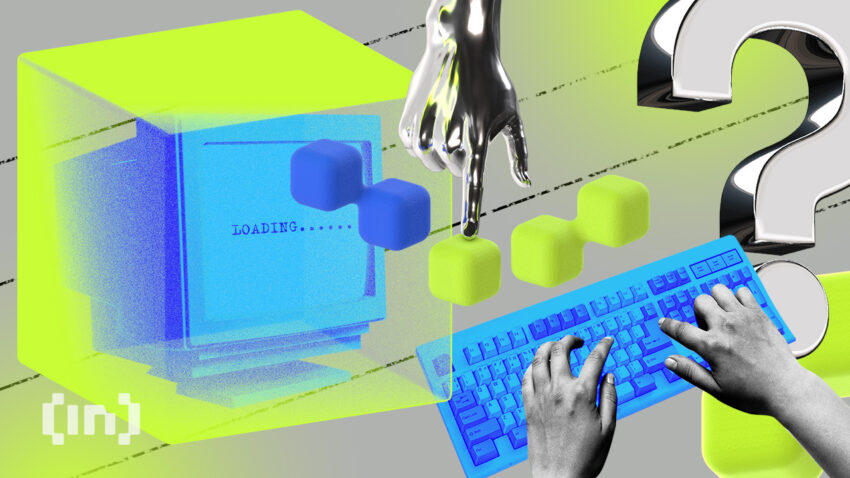Van fundamentele layer-1 netwerken zoals Bitcoin en Ethereum tot innovatieve layer-2 oplossingen die de schaalbaarheid verbeteren en de kosten voor gas verminderen, dit artikel behandelt de beste blockchainprotocollen om te kennen in 2025. Ontdek hoe slimme contracten en consensusalgoritmen veiligere en efficiëntere manieren creëren om transacties te verrichten. Plus, bekijk de native coins en tokens die deze cryptoprotocollen aandrijven voor de bull run en daarna.
Methodology
BeInCrypto’s product team tested and used a variety of crypto platforms over a period of six months, in order order to narrow down a number of recommendations. Here’s why we have highlighted each as good options to purchase the native cryptos of leading blockchain protocols.
Coinbase stands out for its user-friendly interface and robust security measures, making it ideal for both beginners and experienced traders.
Wirex offers the unique feature of a crypto debit card, allowing for the easy conversion of crypto to fiat currencies for everyday use.
YouHodler is recognized for its high-interest crypto savings accounts and the option to use crypto as collateral for loans, providing flexibility in managing crypto assets.
Overall, BeInCrypto selected Coinbase, Wirex, and YouHodler as the optimal platforms for purchasing native cryptocurrencies from prominent blockchain protocols through a comprehensive methodology focusing on several key factors. Firstly, each platform was assessed for its reputation and reliability within the cryptocurrency ecosystem, ensuring a secure and trustworthy environment for users.
Secondly, the availability and variety of native cryptocurrencies offered on these platforms were thoroughly evaluated to ensure a diverse selection that covers leading blockchain protocols, providing users with ample options for investment and diversification.
Additionally, BeInCrypto considered the user experience and interface of each platform, prioritizing intuitive design and ease of use to facilitate seamless transactions for both novice and experienced users.
Moreover, factors such as transaction fees, deposit and withdrawal options, as well as customer support services were scrutinized to ensure cost-effectiveness and responsive assistance, enhancing the overall user experience.
By meticulously analyzing these criteria, BeInCrypto determined that Coinbase, Wirex, and YouHodler emerged as the top choices for individuals seeking to acquire native cryptocurrencies from leading blockchain protocols, offering a blend of reliability, accessibility, and functionality essential for optimal investment strategies in the digital asset space.
To learn more about BeInCrypto’s methodology, click here.
Top 9 cryptoprotocollen in 2025
1. Bitcoin
Widely recognized as the leader in the crypto space, Bitcoin is more than just a digital currency — it’s a decentralized system for secure, peer-to-peer financial exchanges. Bitcoin operates independently of centralized financial authorities, giving the network a level of security that challenges traditional financial systems. The blockchain relies on a community-driven, computational process known as proof-of-work to verify transactions and maintain its integrity.
With a decentralized approach and a secure environment, this crypto protocol is offering an alternative to the traditional financial system. It ensures that payments are irreversible and guards against the risk of double spending, all without the need for trusted third parties like banks. This revolutionary approach has positioned Bitcoin at the forefront of the crypto movement.
Users looking to invest in Bitcoin can do so either by purchasing BTC directly or gaining exposure to the asset via now-approved spot Bitcoin ETFs.
The Ethereum blockchain is widely recognized for its innovation. The community-driven, open-source platform has operated on a proof-of-stake (PoS) consensus mechanism since September 2022. This has significantly reduced its energy consumption by over 99% compared to the older proof-of-work model.
Within Ethereum, decentralized autonomous organizations (DAOs) can create smart contracts. The aim of DAOs is to create profitable ventures or contribute value to the Ethereum community while ensuring that all members have a say in decision-making. These organizations operate based on their own set of rules, including methods for making decisions, economic strategies, and systems for distributing rewards.
Thanks to smart contracts, the network supports NFTs as well as countless applications, with notable examples being MetaMask, a digital wallet, and Brave Browser, which is emerging as a strong competitor to Google Chrome. Users looking to invest in the Ethereum network can purchase the native crypto, Ether.
3. Cardano
Cardano is a blockchain platform built to run secure and eco-friendly decentralized apps and smart contracts. It operates on a proof-of-stake system called Ouroboros, where users help maintain the network by staking their tokens.
A standout feature of Cardano is its commitment to sustainability. The chain aims for low energy use and minimal environmental impact. Moreover, its flexible structure means it can adapt and evolve, ensuring it remains relevant and effective for future decentralized applications. Users looking to invest in Cardano can buy its native coin, ADA.
Polkadot is a diverse and multi-faceted blockchain protocol that acts as a base for a network of interconnected blockchains.
Conceptualized in 2016 and launched in 2020, Polkadot enables different blockchains, whether private or public, to communicate and transfer data and assets through its central Relay Chain and various parachains. These parachains can tailor their features for specific purposes and issue their own tokens while enjoying the advantages of Polkadot’s overarching security and interoperability.
The platform’s native currency, DOT, plays a crucial role in managing and operating this interconnected ecosystem. Polkadot stands out for its scalability, flexibility, ease of developing decentralized applications, and collective security, positioning it as a leading technology in the blockchain space. Users looking to invest in Polkadot can purchase the native DOT crypto.
Solana is an open-source blockchain that facilitates scalable decentralized projects.
Since its inception in 2020, Solana has introduced a number of advancements, including it’s proof-of-history consensus mechanism, Tower BFT, Turbine, and Gulf Stream, enabling it to process up to 65,000 transactions per second and achieve block times of just 400 milliseconds.
The network’s native crypto, SOL, is essential for its operational functions and staking processes. Emphasizing scalability and fast transaction sequencing, Solana is one of the leading and most promising new-generation layer-1 blockchain protocols. In early 2024, the network is playing host to a meme coin frenzy, with Solana meme coins defining the early bull run.
Chainlink is a blockchain-based decentralized oracle network designed to facilitate the secure interaction of smart contracts with external data sources, real-world events, and payment systems.
Since its launch in 2019, Chainlink has bridged the gap between on-chain smart contracts and necessary off-chain information, enabling these contracts to be executed based on real-world data and events. It relies on a worldwide network of decentralized node operators, who use the native LINK crypto to ensure the reliability of the external data fed into blockchains.
Through the cryptographic verification of data and processes, Chainlink ensures that the information connecting blockchains to external systems is secure and trustworthy. Its critical role in linking blockchain with external data has made it an essential piece of infrastructure for various sectors, including decentralized finance (DeFi), insurance, gaming, and more. Users looking for exposure to Chainlink can invest in the native LINK.
Polygon, initially known as Matic Network, is a versatile platform that aims to evolve the architecture of interconnected blockchain networks. It specifically looks to overcome certain challenges faced by Ethereum, such as limited transaction capacity, subpar user experience due to slow and costly transactions, and inadequate community governance.
A standout feature of Polygon is its implementation of layer-2 sidechains — these are auxiliary blockchains operating parallel to the main Ethereum chain. This approach significantly enhances scalability, enabling faster and more affordable transactions. Moreover, Polygon employs a modified proof-of-stake (PoS) consensus mechanism, which contributes to its rapid transaction processing and reduced costs.
The importance of Polygon lies in its ability to improve the scalability and user-friendliness of Ethereum, making it a more practical option for both developers and users. It has become home to many DApps seeking efficient, cost-effective solutions. Users looking to invest in Polygon can look to the native MATIC.
The Ripple blockchain is specifically tailored for digital payment systems, with a core focus on facilitating swift and cost-effective international transactions.
Unlike traditional blockchain systems that rely on proof-of-work (PoW) or proof-of-stake (PoS), Ripple operates on a distinct consensus protocol. This unique mechanism is celebrated for its rapid transaction speeds and minimal fees, and notably, it eliminates the need for mining, significantly reducing energy consumption.
Ripple’s significance lies in its strategic emphasis on integrating with banks and financial institutions. Its primary objective is to enhance efficiency and reduce the complexities associated with cross-border payments, positioning Ripple as a pivotal player in the modernization of global financial infrastructure. Users looking to invest in Ripple can buy XRP.
The BNB Smart Chain (BSC) is a dynamic blockchain network crafted to support applications based on smart contracts. One key attribute is its ability to run concurrently with the BNB Chain, which offers users a dual advantage: the ability to handle a large volume of transactions and the sophisticated functionality of smart contracts. The network employs a unique consensus model known as proof-of-stake-authority (PoSA), enhancing its efficiency and security.
BSC has rapidly become a preferred choice in the blockchain community, known for its minimal transaction fees and superior performance. These features make it an attractive environment for developing decentralized applications (DApps) and various digital assets.
Cryptoprotocollen vergeleken
| Blockchain | Consensusmechanisme | Coin | TPS | Type laag |
|---|---|---|---|---|
| Bitcoin | Proof-of-werk (PoW) | BTC | 7 | Layer-1 |
| Ethereum | Proof-of-stake (PoS) | ETH | ~30 | Layer-1 |
| Cardano | Ouroboros (PoS-variant) | ADA | ~250 | Layer-1 |
| Polkadot | Genomineerd proof-of-stake (NPoS) | DOT | 1000+ | Laag-0 |
| Solana | Bewijs van historie (PoH) | SOL | ~65,000 | Layer-1 |
| Chainlink | Gedecentraliseerd oracle netwerk | LINK | Afhankelijk van Ethereum | Layer-2 |
| Polygoon | Bewijs van inleg (PoS) | MATIC | ~7,000 | Layer-2 |
| Ripple | Bewijs van inleg (PoS) | XRP | ~1,500 | Layer-1 |
| BNB Smart Chain | Bewijs van gestaked autoriteit (PoSA) | BNB | ~100 | Layer-1 |
Wat zijn blockchainprotocollen?
Blockchainprotocollen vormen de ruggengraat van cryptocurrencies en zorgen ervoor dat alle transacties veilig, transparant en onveranderlijk zijn – wat betekent dat ze niet kunnen worden gewijzigd of verwijderd.
Als we het hebben over cryptoprotocollen, bedoelen we de specifieke systemen die verschillende cryptocurrencies, zoals Bitcoin of Ethereum, gebruiken om ervoor te zorgen dat hun netwerken soepel en veilig werken. Elke crypto heeft zijn eigen unieke protocol.
Slimme contracten zijn zelfuitvoerende contracten waarbij de voorwaarden van de overeenkomst tussen koper en verkoper rechtstreeks in de regels van de code worden geschreven. Slimme contracten zijn een belangrijk kenmerk van veel blockchainprotocollen en maken complexere transacties en toepassingen mogelijk.
De eenvoudigste manier om het belang en de omvang van een specifiek cryptoprotocol te begrijpen, is door te kijken naar de dominantie van de oorspronkelijke crypto. Voor de Bitcoin blockchain, bijvoorbeeld, is de crypto waar we naar kijken dezelfde naam, vaak afgekort als de ticker, BTC.
Vanaf 29 maart 2024 behoudt Bitcoin, de allereerste blockchain en crypto, zijn dominantie. Volgens CoinMarketCap staat Bitcoin op 51,53%. Dit is de meest verhandelde crypto, gevolgd door Ether (ETH) met een dominantie van 16,38%.

Blockchainlagen uitgelegd
In het blockchain ecosysteem kunnen verschillende lagen helpen om verschillende problemen op te lossen. Layer-1 verwijst naar de belangrijkste blockchainarchitectuur (zoals het Bitcoin-netwerk of Ethereum).
Deze blockchains kunnen overbelast raken naarmate het gebruik toeneemt, wat leidt tot problemen zoals trage transactietijden en high gas fees – de kosten om een transactie te voltooien of een contract uit te voeren op het Ethereum netwerk.
Layer-2 oplossingen pakken deze problemen aan door bovenop de layer-1 blockchain te werken om de schaalbaarheid te verbeteren – het vermogen van het netwerk om een groter aantal transacties snel en goedkoop te verwerken. Layer-2 oplossingen verwerken transacties afzonderlijk en leggen ze vervolgens vast op de hoofd blockchain, waardoor de belasting en dus ook de gaskosten afnemen.
Layer-0 chains combineren technologieën en protocollen die het blockchainecosysteem ondersteunen. De laag omvat netwerkprotocollen, fysieke hardware en andere elementen.
Interested in L2s? Check our guide to the top layer-2 projects in 2025.
Consensusmechanismen
Transacties worden op een blockchain geverifieerd via een consensusalgoritme. De meest voorkomende types zijn proof-of-work (PoW) en proof-of-stake (PoS).
Proof-of-work, gebruikt door het Bitcoin-netwerk, omvat crypto mining. Tijdens het proces van crypto mining lossen miners complexe wiskundige problemen op om transacties te valideren. Merk op dat dit proces veel energie verbruikt. Anderzijds is proof-of-stake (PoS) een energie-efficiëntere methode. Hier worden validators geselecteerd op basis van de hoeveelheid cryptocurrency die ze bezitten en bereid zijn te staken of op te sluiten als een vorm van security.
De relatie tussen blockchains en cryptocurrency
Cryptocurrency dient in de eerste plaats als de digitale coin of token die binnen blockchainnetwerken wordt gebruikt. In blockchain-systemen zoals het Bitcoin-netwerk zijn crypto’s essentieel voor het compenseren van de deelnemers die het netwerk onderhouden, de zogenaamde miners. Deze miners gebruiken hun rekenkracht om transacties te valideren en nieuwe blokken aan de blockchain toe te voegen. In ruil voor hun inspanningen worden ze beloond met cryptocurrency.
Op dezelfde manier, in blockchains die een proof-of-stake (PoS) consensusmechanisme gebruiken, zetten deelnemers, vaak stakers genoemd, een bepaald bedrag van hun cryptocurrency vast als een stake in het netwerk. Ze worden dan geselecteerd om transacties te valideren en nieuwe blokken te creëren op basis van de hoeveelheid cryptocurrency die ze bezitten en bereid zijn in te zetten. Deze methode beveiligt niet alleen het netwerk en verwerkt transacties, maarbeloont ookdegenen die deelnemen aan het handhaven van de integriteit van de blockchain.
Cryptoprotocollen: Niet gelijk gemaakt
Blockchainprotocollen zijn de regelboeken voor hoe data wordt verwerkt op blockchainnetwerken. Elk protocol is anders en er worden verschillende algoritmen en methoden gebruikt om data veilig, transparant en up-to-date te houden. Deze protocollen hebben echter gemeenschappelijke kenmerken: veel protocollen maken gebruik van een native crypto: een coin of token die het ecosysteem aandrijft.
Gebruikers die willen investeren in de crypto’s van top blockchain protocollen moeten onthouden dat gedecentraliseerde assets volatiel kunnen zijn. Kies altijd een veilig platform om transacties uit te voeren en een gerenommeerde crypto wallet om je assets in op te slaan. Investeer nooit meer dan je je kunt veroorloven om te verliezen.
Veelgestelde vragen
Which protocol is best in crypto?
What is a crypto protocol?
What are layer-3 protocols crypto?
What are the four types of blockchain networks?
What is the best blockchain protocol?
Disclaimer
Alle informatie op onze website wordt te goeder trouw en uitsluitend voor algemene informatiedoeleinden gepubliceerd. Elke actie die de lezer onderneemt op basis van de informatie op onze website is strikt op eigen risico.





